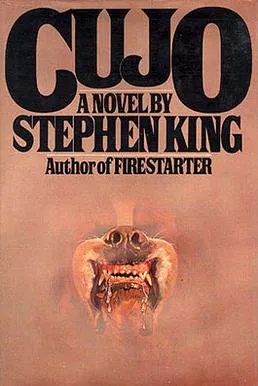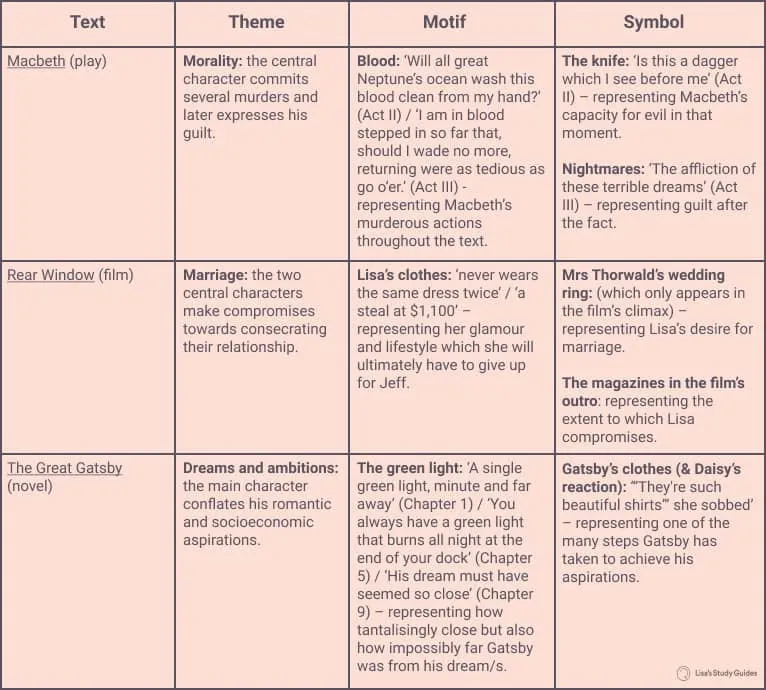Contents:
1. What are Literary Perspectives?
2. What are you expected to cover? (Literary Perspectives criteria)
3. Approaching the Task
4. SACs, Exams, and Allocated Marks
5. How to Prepare/Improve?
What are Literary Perspectives?
This is the task that takes the longest time for all lit students to wrap their heads around. Not only is it difficult to understand what a literary perspective is but also what the essay requires you to do, so hopefully this article can help clear it all up for you!
Put simply, literary perspectives are various different lenses used for looking at all texts. Different lenses reveal, highlight and emphasise different notions in each text. To take a simple example, a Marxist might look at ‘The Great Gatsby’ how our capitalistic system underscores the motivations of Gatsby? A feminist might look towards the role of women in the text; are they only supporting characters, or do they challenge traditional gender roles? Perhaps an experienced literature student might think this is an oversimplification, but it’s a good way to start thinking about perspectives. We will explore a little more of how to integrate and research different literary perspectives in our ‘Approaching the Task’ section.
In short, literary perspectives wants you to consider:
- How does a text change, to the reader and the writer, when we examine it through different backgrounds/perspectives?
- Can we understand the assumptions and ideas about the views and values of the text?
What are you expected to cover/do? (Literary Perspectives Criteria)
1. Structure and Cohesion
The structure of the essay and the task itself is more familiar than the close analysis essay. You respond to a topic (yes, there is only one) and you have a more “typical” essay structure with an introduction, three body paragraphs and a conclusion.
Cohesion comes from how well you can develop your overall argument. The way I like to think about it is: do my paragraphs build/relate to each other or do they have nothing to do with each other? Providing a cohesive argument and interpretation is essential, and not just for literature, this is something that will definitely be enhanced as you continue your literature journey!
2. Develop an overall Interpretation/perspective for each text
This requires a lot of research and critical readings of the wealth of criticism around the text. When you read the text, a few notable themes and ideas should be jumping out at you right away, this will be the springboard into understanding the perspectives around the text.
For example, in ‘The Great Gatsby’, Gatsby and Buchanan are greedy and money-hungry in a world of excess and economic prosperity. Fitzgerald asks readers to consider the backbone that drives a blind devotion to the accumulation of wealth. This should remind you of Karl Marx and his comments on capitalism and communism which will then open up a large wealth of research on Marxism!
Remember, that whilst VCAA specifies that one must analyse and respond to one underlying literary perspective of the text in Section A of the exam, this isn’t as narrow as you might think. So I lied a little, sunglasses as perspectives might be a bit misleading. Because whilst you can’t wear multiple sunglasses, you can have multiple interpretations that form one perspective. It’s important to remember that what constitutes a perspective is not just one school of thought, it is your understanding, perspective and ideas. Which means that if you want to blend a Marxist and Psychoanalytic perspective, you absolutely can, BUT you need to make sure they are incorporated well together. This is because perspectives and literary ideas don’t exist in a vacuum, they work together, bounce off each other and grow over time. Greed could be something that is perpetuated by a capitalistic, market centered system but it could also be something ingrained in the human psyche. See! You’ve now turned two perspectives into one blended idea, of course it needs a lot of cultivation but you can see how these ideas begin to coexist.
Furthermore, if you begin to understand how your text through multiple coexisting lenses’, you’ll broaden your horizon so you’ll be ready to approach any topic. In 2017, VCAA gave the topic: “To what extent is Conrad’s Heart of Darkness an indictment of colonialism?”. What happens if you didn’t choose colonialism/post-colonialism as your perspective and chose feminism instead? You would probably be freaking out in the exam. But if you understood that colonialism was motivated by the need for economic dominance (Marxist ideas) or the West’s hunger for power (psychoanalytical notions), the topic isn’t so daunting after all.
In sum, developing an interpretation is a rocky, complex and difficult ride but have patience, it will all pay off in the end. Stick around and we will give you a few tips below on how to interpret and continue to develop your interpretation! PS. Here’s a video that might be helpful if you need the extra advice: What are literary perspectives.
3. Understanding and analysis of the text through textual evidence
This should be self-explanatory at this point; everyone has been taught this since year 7: never say anything if you can’t back it up! It’s easy to get lost in your perspective when your writing, this is just a gentle reminder to never forget to use quotes and actual evidence from the text. Here’s a helpful video on how to incorporate quotes.
4. Control and effectiveness of language
Having control and effective use of language is a criteria present in both sections of Literature (and in English)! I won’t go into too much depth, but this video provides 6 great tips on improving your expression!
Approaching the Task
So how do you best tackle the exam and the SAC?
Aforementioned, the exam will only give you one topic to respond to and your SACs will do something similar (we’ll get into this later). Here are some tips on handling lit perspectives on the exam and SAC.
When you first see the topic, there are a few things you can do to help approach the task.
1. Highlight key words!
Again, pretty self-explanatory. It absolutely essential that you respond to the whole topic. It’s so easy to get caught up in the first half of the topic when you see a key word that you like/don’t like. But pay attention to what the topic is actually asking you to do, not just the central theme/idea that is contained within the topic.
2. Plan!
Find all the key close textual examples that you’d like to use. Make sure to choose ones that enhance your overall interpretation. Remember, that just because it isn’t a close analysis essay doesn’t mean you shouldn’t include close textual examples.
Planning is a very individual task so it’s up to you to find out what works for you, but it is an essential part of the writing process. If you want a coherent interpretation, you need to know where you’re going as you write. If you fail to plan, you plan to fail!
3. Develop/Establish your interpretation in your introduction
By now, you know the importance of establishing a strong interpretation of your text. This needs to be established in your introduction (and that includes all the buzzwords of your interpretation).
What I mean is, a lot of perspectives have a lot of jargon that is not always easy to read… Part of your job in your introduction is precisely to clarify some of these key jargons, it does not have to be super detailed, just give a simple definition of some of the key terms you are working with.
SACs, Exams, and Allocated Marks
This SAC comprises 50% of Unit 4 and in my opinion, was the most difficult to wrap my head around. The breakdown is as follows:

To simplify, it’s essentially like the literary perspective essay in the final exam; however, you need to “compare and analyse two pieces of literary criticism reflecting different perspectives”. Remember how I mentioned that one perspective can be a mix and blend of two different perspectives? Well this SAC is trying to teach you just that. You’ll be tasked with finding two different perspectives, but that doesn’t mean they have to be opposing at all. The example from before: “Greed could be something that is perpetuated by a capitalistic, market centered system but it could also be something ingrained in the human psyche” is just one way in which you can take two different pieces of literary criticism reflecting different ideas and bring them together in this SAC.
This SAC also asks you to research rigorously the literary discourse around the text, so that will be your first starting point. Find what you want to talk about and then figure out how to talk about it!
This may be classified as ‘Section A’ on the exam, but it does not have to be completed first, this is up to you! Each essay in the exam is worth 20 marks and will be double marked. The score that each examiner gives you will be added together, so both your final essays will be out of 40.
How to Prepare (and Improve!) for your Close Analysis SAC and Exam
Everyone’s heard the phrase “practice makes perfect”, but nobody really tells you how to practice? What does practicing mean in a Lit Perspectives context? Here are a few recommendations and guidelines about how to ACE your next lit perspectives essay:
1. Read and Re-read your text (or re-watch your film)
You’ll have heard this hundreds of times but it’s absolutely essential, who knows, you might change your mind? Meanwhile you can find good quotes you like and potentially spot techniques or language devices you might have missed on the first or even second read!
Each time you re-read, go in with fresh ideas and perspectives and search for examples that either contradict or support your interpretation. Critical reading is what us lit kids do!
2. Find buzzwords for your text or your perspective
Aforementioned, jargon and buzzwords populate the modern literature discourse for any text and perspective. It’s important that you have a firm grasp of these words and phrases. Here are some examples of a few:
Marxism:
- Communism/capitalism
- Greed
- Superstructure
- Institutions
Psychoanalysis:
- The unconscious
- Desire
- ID, ego and superego
3. Talk to your friends and teachers, bounce ideas off each other!!!
Two minds are better than one. Not revolutionary, but unequivocally true. Whenever you are stuck in a rut, talk to your friends about what you think and maybe they can help challenge your ideas. Don’t be afraid to argue your point and be open to criticism, challenging your ideas will only help refine and enhance it. It’ll also make you consider some ideas you might not have thought about it.
4. Write specific examples
This is the same advice for close analysis (and any other essay for that essays). Practice writing doesn’t mean you have to write a full essay every time, this can be both draining for you and your teacher to mark. Plus, most of the time, you’ll make the same mistakes/the feedback will be same throughout the entire essay. Try little snippets of examples, paragraphs or introductions instead.
5. Utilise all available resources
Teachers are a hub of intelligence, ask them for questions, advice and feedback. Have a look at online resources including critical articles on your texts (not just lit charts articles). There are a bunch of different articles linked throughout this article but here are a summary of a few more articles written by some very smart LSG tutors!
Resources
Breaking down the VCE Literature Exam Criteria





%20(2).webp)





.jpg)